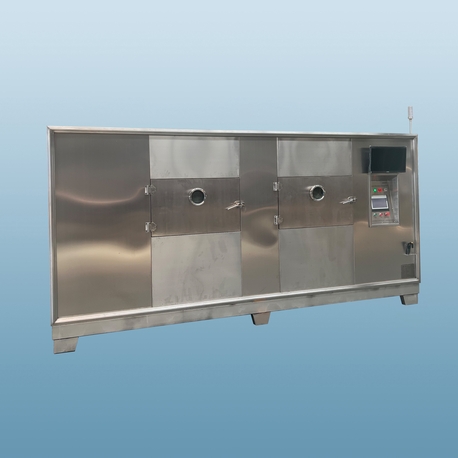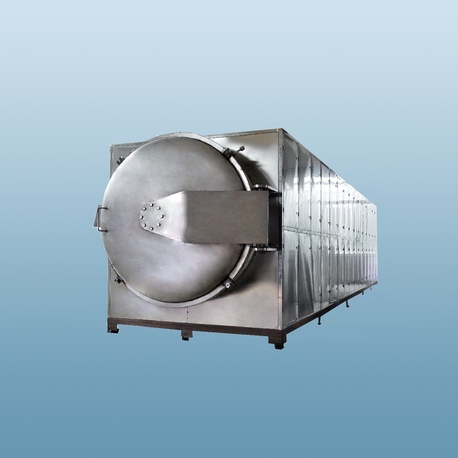When you think about the backbone of manufacturing and processing industries, what comes to mind? Perhaps it's the assembly lines or the quality control systems. But one often-overlooked hero is the industrial dryer. These machines are pivotal in transforming wet, raw materials into dry, usable products efficiently and reliably. From food processing to pharmaceuticals, industrial dryers play a critical role in ensuring product quality, reducing waste, and boosting productivity. In this article, we'll dive into the essential aspects of industrial dryers, including their functions, operational processes, and the diverse sectors that rely on them. We'll also touch on practical solutions for optimizing their use, and along the way, I'll mention Nasan, a brand that has been making waves in the industrial drying landscape with its innovative approaches. Whether you're a plant manager or an industry enthusiast, this read will equip you with actionable knowledge to leverage these machines effectively.
Industrial dryers aren't just about removing moisture; they're about precision and efficiency in large-scale operations. As industries evolve, the demand for advanced drying technologies grows, making it crucial to understand how these systems work and where they fit in. Let's start by exploring what makes industrial dryers so indispensable.

What Is an Industrial Dryer and Why Does It Matter?
An industrial dryer is a specialized machine designed to remove moisture or other liquids from materials through processes like evaporation, using heat, airflow, or other mechanisms. Unlike household dryers, these are built for heavy-duty applications, handling everything from grains and chemicals to textiles and minerals. The primary role of an industrial dryer is to ensure that materials meet specific dryness standards, which is vital for storage, further processing, or final product quality. For instance, in the food industry, improper drying can lead to spoilage, while in pharmaceuticals, it affects drug efficacy. This underscores why investing in a reliable industrial dryer is a smart move for any business aiming to minimize losses and enhance output.
In recent years, brands like Nasan have elevated the game by incorporating energy-efficient features and smart controls into their industrial dryers. This not only reduces operational costs but also aligns with sustainability goals. As we delve deeper, you'll see how these machines are more than just equipment—they're strategic assets.
The Core Functions of Industrial Dryers
Industrial dryers serve multiple purposes beyond basic drying. First, they improve product shelf life by eliminating moisture that could cause microbial growth. In agriculture, for example, grain dryers prevent mold formation, safeguarding food supplies. Second, they enhance material handling; dried materials are easier to transport, store, and process. Think of how wood chips need drying before being used in biomass energy production—it streamlines the entire supply chain. Third, industrial dryers contribute to quality consistency. In the textile sector, uniform drying ensures fabrics maintain their texture and color, which is crucial for customer satisfaction.
Moreover, these machines support safety by reducing hazards like combustion risks in chemical processing. By integrating an industrial dryer into your operations, you're not just drying products—you're building a foundation for reliability and growth. Nasan's models, for instance, often include automated monitoring systems that adjust parameters in real-time, ensuring optimal performance across varying conditions.
How Industrial Dryers Operate: A Step-by-Step Overview
Understanding the operation of an industrial dryer can demystify its complexity. Typically, the process begins with loading the wet material into the dryer's chamber. Depending on the type—such as rotary, fluidized bed, or spray dryers—the mechanism varies. For example, in a rotary industrial dryer, materials tumble in a heated drum, allowing even exposure to hot air. This involves several stages: pre-heating to raise the material temperature, constant-rate drying where most moisture evaporates, and falling-rate drying for residual moisture removal.
Key steps include:
Feeding: Materials are introduced via conveyors or manual loading.
Heating: Heat sources like gas, electricity, or steam generate the necessary temperature.
Airflow: Fans circulate air to carry away moisture.
Control: Sensors monitor humidity and temperature, adjusting settings to prevent over-drying.
This operational flow highlights why regular maintenance is essential. Brands like Nasan emphasize user-friendly interfaces that simplify these processes, reducing downtime. In one case study, a manufacturing plant using a Nasan industrial dryer reported a 20% increase in efficiency due to its intuitive controls and robust build.
Industries That Rely Heavily on Industrial Dryers
The versatility of industrial dryers means they're used across a wide array of sectors. In the food and beverage industry, they dry fruits, vegetables, and grains to extend shelf life and meet safety standards. For instance, a dairy processing plant might use an industrial dryer for milk powder production, ensuring consistency in texture and flavor. In pharmaceuticals, these machines dry active ingredients and tablets to maintain potency and compliance with regulatory guidelines.
Other key areas include:
Chemicals: Drying pigments or polymers to achieve specific properties.
Minerals: Removing moisture from ores to facilitate smelting.
Textiles: Dying and finishing fabrics to enhance durability.
Biotechnology: Processing biological samples for research.
Each application demands tailored solutions, which is where specialized industrial dryers shine. Nasan, for example, offers customizable options that adapt to unique industry needs, from high-temperature settings for harsh environments to gentle drying for sensitive materials. This adaptability makes industrial dryers a cornerstone in modern industrial setups.
Solutions for Common Challenges with Industrial Dryers
Despite their benefits, industrial dryers can face issues like energy inefficiency, uneven drying, or maintenance headaches. To address these, consider implementing energy recovery systems that reuse waste heat—this can cut costs by up to 30%. For uneven drying, regular calibration of airflow and temperature controls is crucial. Also, opting for modular industrial dryer designs allows for easier upgrades and repairs.
Preventive maintenance is another game-changer. Schedule routine checks for components like filters and heaters to avoid breakdowns. Nasan's support services often include predictive maintenance tools that alert users to potential issues before they escalate. Additionally, training staff on proper operation can minimize human error. By adopting these solutions, businesses can maximize the lifespan and performance of their industrial drying equipment, turning potential setbacks into opportunities for improvement.

The Future of Industrial Drying Technology
As industries lean toward automation and IoT, industrial dryers are evolving too. We're seeing more smart dryers with AI-driven analytics that predict maintenance needs and optimize energy use. Sustainability is also a big trend, with solar-assisted dryers gaining traction. Nasan is at the forefront here, developing eco-friendly models that reduce carbon footprints without compromising power.
Looking ahead, the integration of industrial dryers with Industry 4.0 will enable seamless data exchange across production lines. This means real-time adjustments and higher efficiency. For businesses, staying updated on these trends isn't just optional—it's essential for remaining competitive. By embracing innovations, you can future-proof your operations and reap long-term benefits from your industrial dryer investments.
Industrial dryers are unsung heroes in the industrial world, driving efficiency, quality, and safety across numerous sectors. From their core functions to operational nuances and industry applications, understanding these machines can transform how you approach production challenges. Brands like Nasan exemplify how innovation can elevate drying technology, offering solutions that are both robust and adaptable. As you consider integrating or upgrading an industrial dryer in your setup, remember that it's an investment in precision and growth. Keep exploring, and don't hesitate to leverage expert insights to make informed decisions.
Frequently Asked Questions About Industrial Dryers
Q1: What is the average lifespan of an industrial dryer?
A1: The lifespan of an industrial dryer typically ranges from 10 to 20 years, depending on usage, maintenance, and the quality of the machine. Regular servicing and using genuine parts, such as those from brands like Nasan, can extend this period significantly.
Q2: How can I reduce energy consumption in my industrial dryer?
A2: To cut energy use, consider upgrading to high-efficiency models with heat recovery systems, optimizing load sizes to avoid underutilization, and conducting regular insulation checks. Many modern industrial dryers, including Nasan's offerings, come with energy-saving modes that automate these adjustments.
Q3: What safety measures are essential for operating an industrial dryer?
A3: Key safety steps include installing proper ventilation to prevent overheating, using explosion-proof designs for flammable materials, and training operators on emergency protocols. Always follow manufacturer guidelines—for instance, Nasan provides detailed safety manuals with their industrial dryers to ensure compliance.
Q4: Can industrial dryers handle sensitive or delicate materials?
A4: Yes, many industrial dryers are designed for gentle drying using low temperatures or controlled airflow. Options like vacuum dryers or those with programmable settings are ideal for sensitive items such as pharmaceuticals or certain foods. Brands like Nasan often customize dryers to suit specific material requirements.
Q5: What are the common signs that an industrial dryer needs maintenance?
A5: Watch for uneven drying results, unusual noises, increased energy bills, or frequent shutdowns. These could indicate issues like clogged filters or worn-out components. Scheduling routine inspections, as recommended by providers like Nasan, can help catch problems early and avoid costly repairs.







